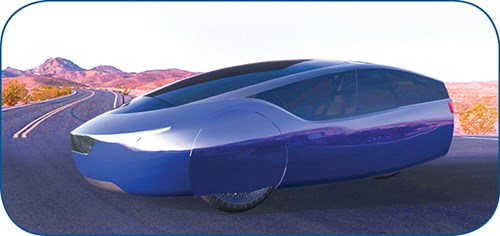3D Digitally 'Printed' Plane Flies Solo
Last summer, the world’s first unmanned air vehicle (UAV) whose entire structure was produced by laser sintering of nylon, was flown by engineers at the University of Southampton, England.
Last summer, the world’s first unmanned air vehicle (UAV) whose entire structure was produced by laser sintering of nylon, was flown by engineers at the University of Southampton, England. The electric-powered aircraft with a 2-meter wingspan has a top speed of nearly 100 mph. Its nylon parts, including wings, integral control surfaces, and access hatches, were digitally “printed” on an EOS Eosint P730 laster sintering system from Electo Optical Systems (EOS) in Germany (EOS of North America is in Novi, Mich.). Using only snap-fits, the plane can be assembled without tools in minutes. Laser sintering allows creation of shapes that would be very difficult and expensive to produce with conventional composites or aluminum, such as elliptical wings with superior aerodynamics and stiff but lightweight geodetic structures.
This follows the appearance in late 2010 of a prototype of a digitally printed car from Kor EcoLogic, an engineering group in Winnipeg, Manitoba. Dubbed the Urbee (for urban electric with ethanol), it’s the first car whose entire body was produced by another 3D printing process, fused deposition modeling (FDM), on Dimension and Fortus equipment from Stratasys, Eden Prairie, Minn. The 10 ABS body panels were produced at Stratasys’ digital manufacturing service, RedEye on Demand.
Related Content
-
Neste, Borealis and Covestro Plan to Make Polycarbonate From Recycled Tires
Companies announced agreement that will use advanced recycling to convert old tires into new PC-suitable for automotive applications.
-
PEEK for Monolayer E-Motor Magnet Wire Insulation
Solvay’s KetaSpire KT-857 PEEK extrusion compound eliminates adhesion and sustainability constraints of conventional PEEK or enamel insulation processes.
-
Honda Now Exploring UBQ’s Biobased Material Made from Unsorted Household Waste
UBQ is aiming to expand its reach for more sustainable automotive parts as well as non-automotive applications.







